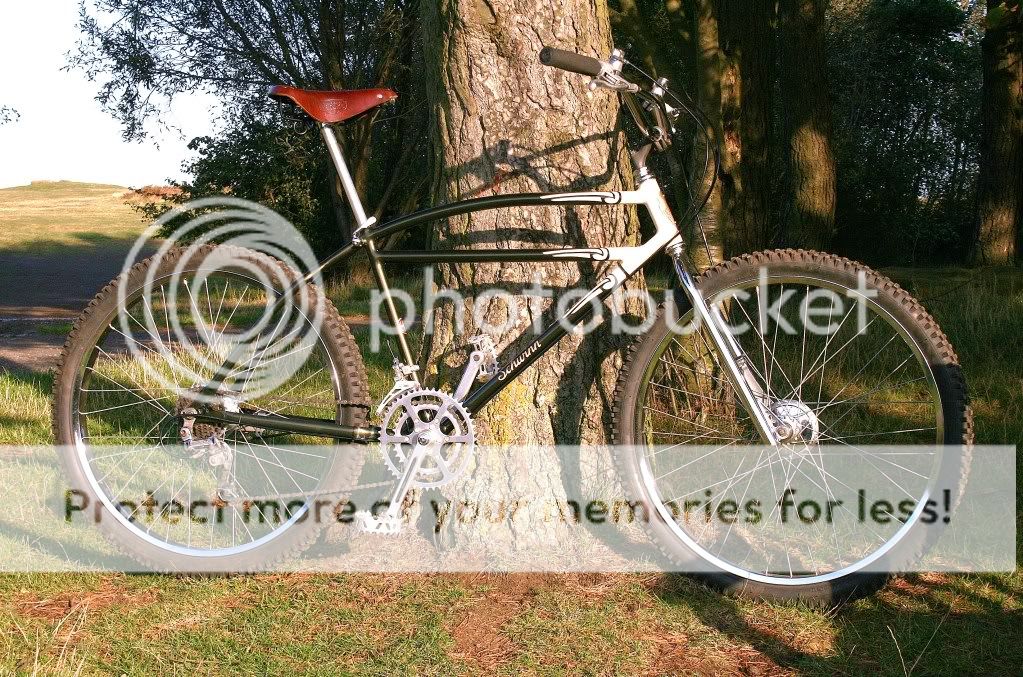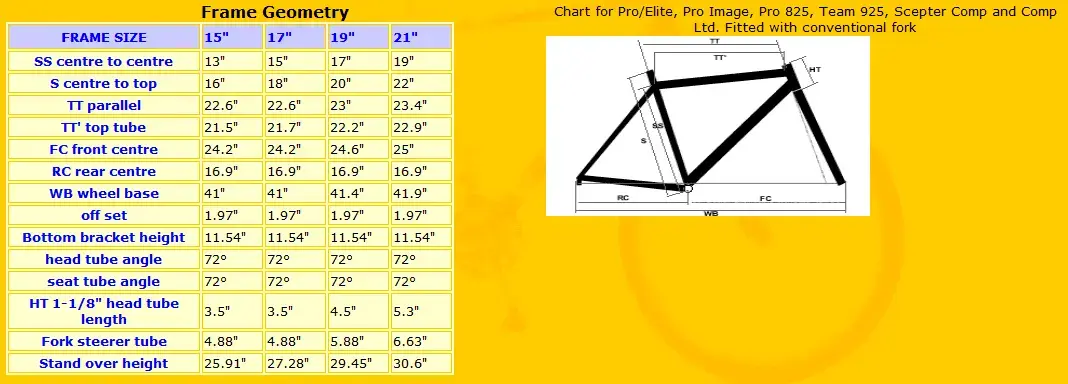You might be surprised Anthony, but they are not a million miles apart. Yes the Cotic weighs half as much and then some, and the suspended front gives greater grip and comfort. But allow me to post my own personal comparisons.
Both the Schwinn and the Cotic dislike climbing. The rearward weight bias on both bikes, coupled with high-ish front ends, makes the steering rather unresponsive. They both tend to wag about unless you conciously load some more body weight over the front, which in turn kills the traction. Both bikes therefore prefer to be pushed up a steep slope by a cursing rider.
When decsending, both bikes come into their own. The slack geometry puts you in the right place for really hammering down the trail and make it easy to pop the front over obsticles. The high speed steering response is similar on both bikes- easy to place with a nice blend of communication without being nervous. At speed the longer wheelbase also makes for a stable platform, making you push harder and harder.
Out of all the bikes I own they are the two that I most feel comfortable jumping. I've never been one for getting air as I tend to panic and stiffen up, but both bikes fly really well, feeling stable and controlled and without drama on landing. They both inspire great confidence.
It comes as no surprise to me. As previously mentioned, geometry and wheelbase are the same. The bars on both bikes are 750mm wide with between six and eight degrees backsweep and both run stems between 60-70mm. Remember that the Klunker pioneers used short BMX stems as long XC stems were unavailable.
I've riden both bikes down black graded DH tracks now, and can vouch that both bikes handled just the same- both bikes pushed as far as I can as a rider, me being the limiting factor in their performance. I'm sure in the right hands the Cotic would be much faster downhill- that's only natural, but to say the handling between a modern bike and those early Klunkers are poles apart is far from the truth.
To pick up on your final point about bikes being designed for different riding... Those original Klunkers were built (not really designed as such) to ride down hills as fast as possible. They did have short stems, no they didn't have long forks but found that a high front end was beneficial, hence the use of BMX riser bars in many instances.
As final proof for my arguement, if you took three bikes- a Repack style Schwinn, a mid 90's XC bike and a modern slack angled trail bike and rode all three on the same trail, then itwould be very clear to see which bikes are most alike in character.
Both the Schwinn and the Cotic dislike climbing. The rearward weight bias on both bikes, coupled with high-ish front ends, makes the steering rather unresponsive. They both tend to wag about unless you conciously load some more body weight over the front, which in turn kills the traction. Both bikes therefore prefer to be pushed up a steep slope by a cursing rider.
When decsending, both bikes come into their own. The slack geometry puts you in the right place for really hammering down the trail and make it easy to pop the front over obsticles. The high speed steering response is similar on both bikes- easy to place with a nice blend of communication without being nervous. At speed the longer wheelbase also makes for a stable platform, making you push harder and harder.
Out of all the bikes I own they are the two that I most feel comfortable jumping. I've never been one for getting air as I tend to panic and stiffen up, but both bikes fly really well, feeling stable and controlled and without drama on landing. They both inspire great confidence.
It comes as no surprise to me. As previously mentioned, geometry and wheelbase are the same. The bars on both bikes are 750mm wide with between six and eight degrees backsweep and both run stems between 60-70mm. Remember that the Klunker pioneers used short BMX stems as long XC stems were unavailable.
I've riden both bikes down black graded DH tracks now, and can vouch that both bikes handled just the same- both bikes pushed as far as I can as a rider, me being the limiting factor in their performance. I'm sure in the right hands the Cotic would be much faster downhill- that's only natural, but to say the handling between a modern bike and those early Klunkers are poles apart is far from the truth.
To pick up on your final point about bikes being designed for different riding... Those original Klunkers were built (not really designed as such) to ride down hills as fast as possible. They did have short stems, no they didn't have long forks but found that a high front end was beneficial, hence the use of BMX riser bars in many instances.
As final proof for my arguement, if you took three bikes- a Repack style Schwinn, a mid 90's XC bike and a modern slack angled trail bike and rode all three on the same trail, then itwould be very clear to see which bikes are most alike in character.

